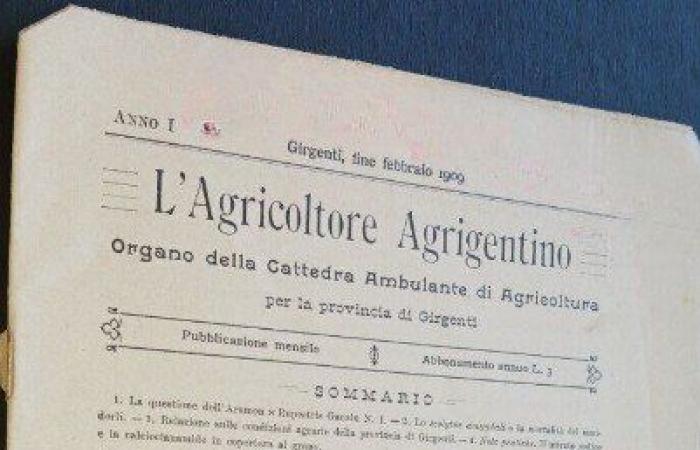The Itinerant Chair of Agrigento has transformed local agriculture through innovation and direct education to farmers.
The Itinerant Chair of Agriculture of Agrigento
The Itinerant Chair of Agriculture represents a significant innovation in local agricultural history, particularly relevant for cities in southern Italy, such as Agrigento (also known as Girgenti in the era we cover).
This institution, designed to spread agricultural knowledge and techniques among farmers, played a crucial role in improving agricultural practices and modernizing agriculture.
Origins and Development of Itinerant Chairs
Itinerant Agricultural Chairs were first established in the 19th century with the intent of bringing agricultural education directly to farmers.
This teaching model proved particularly effective in rural areas where opportunities for access to formal education were limited.
The chairs were itinerant, allowing instructors to move from village to village, providing practical field lessons and demonstrations of advanced agricultural techniques.
The implementation in Agrigento
Agrigento, like many other southern provinces, initially did not immediately benefit from these initiatives.
In fact, until 1907, only a minority of the southern and island provinces had one or more itinerant chairs, with Agrigento among the few exceptions together with Naples and Palermo.
However, over time, the adoption of these chairs in the southern provinces began to grow, thanks also to the efforts of influential personalities and national agricultural associations.
Structure and Functioning of the Chairs
The Itinerant Chairs were generally supported by provincial administrations, Chambers of Commerce, Savings Banks, and other local institutions.
Funding came from both public and private funds, with a significant portion coming from the state.
Each chair was headed by a lecturer-consultant, who was required to give public lectures, offer practical advice to farmers, and promote the use of new agricultural technologies.
Objectives and Activities
The goals of the Itinerant Chairs included the dissemination of better agricultural practices, the introduction of new varieties of plants and seeds, the use of chemical fertilizers, and the adoption of advanced agricultural machinery.
Furthermore, these chairs were responsible for establishing experimental fields, organizing theoretical and practical lessons for teachers and priests, and holding conferences for soldiers. In this way, the chairs not only educated farmers but also served as centers of agricultural innovation.
Impacts and Results
The introduction of the Itinerant Chairs led to significant improvements in the agriculture of the regions involved.
Farmers were able to increase the productivity and quality of their crops by adopting new agricultural techniques and tools.
Furthermore, the establishment of the chairs contributed to greater cooperation between farmers, favoring the formation of agricultural consortia and rural cooperatives which further supported agricultural development.
Challenges and Limitations
Despite their successes, the Itinerant Chairs faced several challenges.
In many areas, especially in southern Italy, the adoption of new agricultural practices was slow due to resistance to change and a lack of resources.
Furthermore, there were significant disparities in funding and support between different regions, with northern Italy often receiving more resources than the south.
Conclusion
The Itinerant Agricultural Chairs represent one of the most important initiatives for agricultural progress in Italy, especially in cities with an agricultural vocation such as Agrigento.
Through itinerant education, these chairs managed to disseminate crucial knowledge for the improvement of agricultural practices, contributing significantly to the modernization of Italian agriculture.
Despite the difficulties encountered, their positive impact is evident and remains an example of success in the history of Agrigento agriculture.






